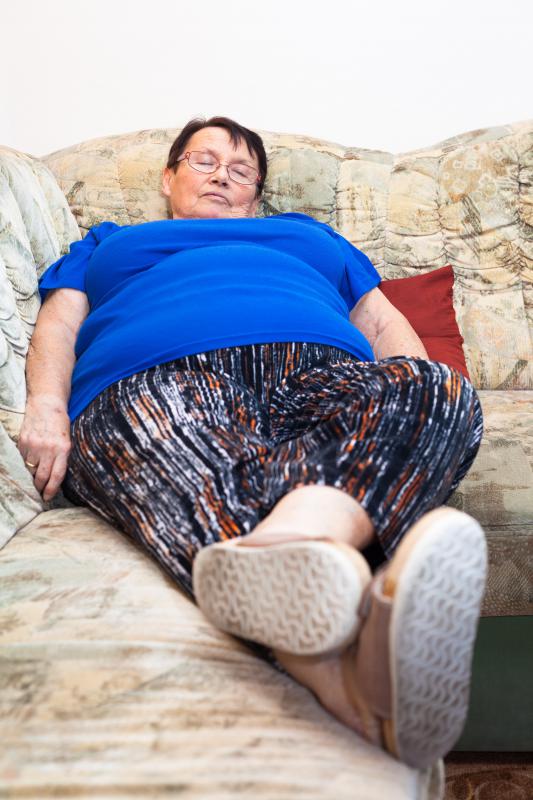At WiseGEEK, we're committed to delivering accurate, trustworthy information. Our expert-authored content is rigorously fact-checked and sourced from credible authorities. Discover how we uphold the highest standards in providing you with reliable knowledge.
What is Rest Pain?
Rest pain is a consistent burning, tearing, sharp pain or shooting pain sensation in the lower leg, toes or feet caused by ischaemia — reduced blood flow — of the lower leg. The pain starts or is made worse by heat, when lying down or when reclining in a chair. Sitting up, dangling the feet or standing can sometimes relieve symptoms.
Rest pain might be a symptom of lower extremity arterial disease. This occurs when the inner lining of the blood cells become damaged. The damaged blood cells cause cholesterol and other lipids to build up within the arterial wall, making the lining rough and thicker than healthy arterial wall lining should be. Hardening of the arteries in this manner is medically deemed atherosclerosis and results in reduced blood flow, or ischaemia.

As the arteries continue to thicken, the individual might start to experience cramps and/or pain in the hips and legs when walking. When these symptoms occur, it is called claudication. The pain occurs when walking because the exercise causes blood flow to increase. The arteries are partially or fully blocked, so the blood flow cannot increase and instead causes discomfort.

Rest pain is the next stage after claudication, when the arteries have been damaged to the extent that not enough blood is able to reach the feet. Individuals who suffer from rest pain must make sure to check their feet often and thoroughly for signs of gangrene. All body tissue relies on blood flow for oxygen and other nutrients to keep it alive. If a person's feet go long enough without sufficient nutrition, the tissue will die, resulting in gangrene and possibly necessitating amputation.

Rest pain is most common among the elderly, and smoking is a high risk factor. High blood pressure, high cholesterol and high triglyceride levels also might factor into causing this symptom. Obesity, a sedentary lifestyle, diabetes and a family history of heart disease also might be factors leading to rest pain.
Signs that a person might have reduced blood flow to the lower extremities are thickened toenails, smaller calf muscles or a wound on the feet or legs that is slow to heal or not healing at all. Discoloration when dangling the legs or less hair growth on the legs and feet might also be a warning sign. Other symptoms include faint or absent pulse, numbness, tingling or a cold sensation in the legs or feet.

Surgery might be needed to relieve severe symptoms. The progression of the underlying causes of rest pain can be slowed or stopped by simple lifestyle changes. Quitting smoking, reducing blood pressure, a healthy diet and exercise might be enough to reduce symptoms. If an individual suffers from diabetes and rest pain, additional care must be taken regarding diet, medication or any other treatment plan in place.
AS FEATURED ON:
AS FEATURED ON:


















Discuss this Article
Post your comments